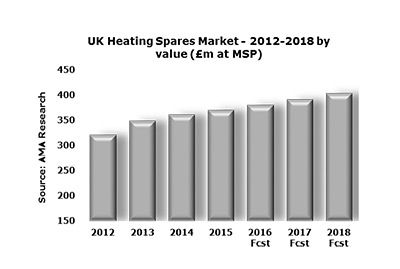
 Cold weather, which has been causing a growth in wear and tear, has been contributing to the ever-growing demand for spare parts in the UK.
Cold weather, which has been causing a growth in wear and tear, has been contributing to the ever-growing demand for spare parts in the UK.
The evidence is contained in the ‘Heating Spares Market Report – UK 2016-2020 Analysis’ report is published by AMA Research, a leading provider of market research and consultancy services within the construction and home improvement markets.
The high level of combination boilers now installed in the UK have also been supporting this demand, while the growth of maintenance schemes, such as those now offered by utility companies and home emergency insurance providers, has been supporting the repair sector and subsequently, the consumables and spares market.
Other factors supporting underlying growth include lower levels of capital expenditure in some non-domestic end-use sectors, especially in certain public sectors.
The continued growth of renewable energy solutions and technological developments, for example in the area of ‘smart’ heating controls, have also generated demand for a wider range of spares. These are often more specialised and of a higher value.
However, a negative influence on underlying market value has been the intense price competition, partly created by cheap imports and weaknesses in commodity prices.
Short-term forecasts for the heating spares market are difficult to make, as the market is, to some extent, reliant on the weather influencing usage levels and wear and tear.
In the non-domestic sector, the focus on repair is likely to be particularly strong in certain public sectors due to constraints on capital spending. The level of house building is expected to remain buoyant and while this favours demand for new equipment rather than spares in the immediate term, the growth in the installed base of heating equipment will support demand for spares in the longer term.
Many of the boilers and systems being installed are now more complex, which could result in more expensive repairs and the type of systems installed will impact on the nature of future spares demand. For example, the increasing pressure on available space and smaller households will favour the development of small homes and flats. This is likely to have a positive impact on electric or gas combination boilers, which are suited to small properties.
In terms of product trends, it is likely that the focus on energy efficiency will continue to stimulate the replacement of ‘traditional’ boilers with high-efficiency combination boilers.
Forecasts for 2016 are for growth of around three percent, reflecting another relatively mild winter, with the period to 2020 looking set for steady growth of around three to four percent per annum – subject to the weather, of course.
